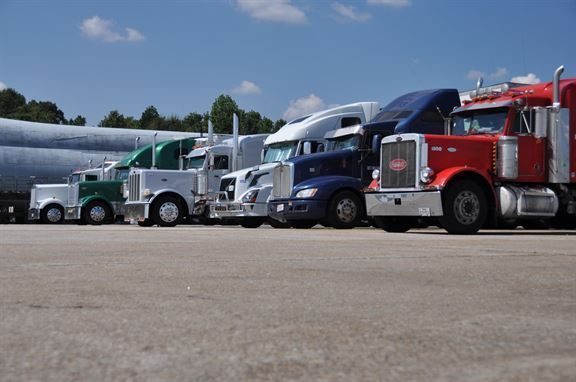What You Should Know About Truck Drivers Protests: The ELD

On October 3rd through 8th, hundreds of independent truck drivers gathered in Washington, D.C. to protest a federal mandate scheduled to go into effect this year. Thousands more drivers gathered across the country to protest the mandate, including in California where 700 trucks, organized by local Indian-American Sikh truckers, drove from Yuba City to Sacramento.
Some of the trucks were ticketed for driving as low as 25 miles an hour on the Interstate. This is similar to trucker’s protests during the 1970s oil crisis where hundreds of trucks would gather and block highways to protest the government’s response to the OPEC oil embargo and the implementation of a national 55 MPH speed limit.
Now, truckers are protesting again. This time, against Electronic Logging Devices, required by a new law going into effect this year.
The Moving Ahead for Progress in the 21st Century Act requires that all trucks currently using paper driver logs must convert to using an ELD. Drivers must comply with the regulation by Dec. 18, unless the deadline gets pushed back by Congress.
Like the 1970s protests, most of the opposition to the new federal rule comes from independent truckers, not large companies, some of which already use Electronic Logging Devices and can spread the cost of the mandate — installing the new technology, complying with the new rules, and wasted driver time from inflexible regulations — over thousands of loads and hundreds of customers.
By the Federal Motor Carrier Safety Administration’s conservative estimate, the total annual cost to the trucking industry will be $975 million — just to install and maintain the systems. The estimated cost of adding additional drivers and trucks to ensure compliance will be about $604 million.
Electronic Logging Devices are similar to tablet computers, but they have a very specific purpose: to monitor the truck’s engine through the Onboard Diagnostics system, monitor hours of duty, and record that information to share with the owner of the truck and law enforcement organizations.
The issue is not just about an inconvenient new law. Truck drivers are also objecting to having their engines monitored, and providing more information to governments and transportation authorities. It’s a debate about the value of personal freedom to truckers, and how much oversight the government should be allowed to have.
Additionally, many drivers are concerned about the certification of ELDs, reliability and safety of the technology, connectivity in remote locations, and the ability of the government to track and supervise trucks — mostly owner operators who would be penalized for not recording or providing the information.
Truck drivers are typically paid by distance, not time, meaning that drivers need to be moving to make money. The “14 hour law” is a regulation that requires drivers to drive no longer than 11 hours a day, and work no more than 14 hours overall. With paper logs, if drivers get stuck in traffic, an accident, or bad weather, they can drive faster for their remaining hours and average the miles driven over hours worked, so long as their average speed doesn’t exceed the limits.
The “14 hour law” gives drivers an additional three hours that they can work, so long as they aren’t driving to their destination. This means that drivers drive exactly 11 hours towards their destination, and then drive to park their truck. With electronic logs, they can only drive the truck for exactly 11 hours, so they have to use time otherwise spent earning money instead finding parking spaces — or, some fear, risk their truck’s engine shutting down on the Interstate. Truck technology manufacturers associations deny that their equipment has any control over shutting down the engine, just tracking and recording ability.
Many drivers are upset not only over the federal regulation, but also President Trump. Some supported Trump because of his promises to support business. President Trump even addressed the American Trucking Associations, stating that he “wants lower taxes, bigger paychecks, and more jobs for American truckers.” But now, as the federal regulation looms, many independent drivers feel that Trump abandoned them in favor of the big trucking businesses.
According to driver Earl Doc Blackbon, petitions to repeal the ELD mandate are being circulated. One popular one needs 25,000 signatures and has about 17,000. The Owner Operator Independent Driver’s Association has also petitioned the Supreme Court for a Writ of Certiorari, which you can read here.
There’s still hope for the independent drivers though, but it might be a long shot. Representative Brian Babin, (R-TX) introduced H.R.3282 – ELD Extension Act of 2017. The bill has 55 supporters, including Michigan’s Bill Huzenga. But support for the bill, which would push back the deadline for getting ELDs two years, has stalled. And President Trump has yet to support industry by denouncing an Obama administration era regulation and expecting Congress to repeal it, at a time when it would be especially helpful to small business.
So drivers are taking it upon themselves to publicize their goal of pushing back the regulation, by protesting, shutting down their trucks, and taking to social media. Two social media organizations, ELD or Me and Operation Black and Blue, are making the biggest impact. Just like the trucker’s protests of the 1970s, the little people — independent drivers — are standing up to the government and hoping that we’ll take notice.








